My current trip through Asia saw me reach my 1000th bird species in the world during our stay in the Philippines. While I do not really pursue any figures, this illustrates how much of a turning point these last twelve months have been for me as a birder. Over the last year, I have made over two thirds of all my bird lifers while traveling Madagascar and Kenya for research, and living between Finland and Spain. This post aims at appreciating some charms of birdwatching while describing some interesting encounters with several narrow endemics and other bird specialties.
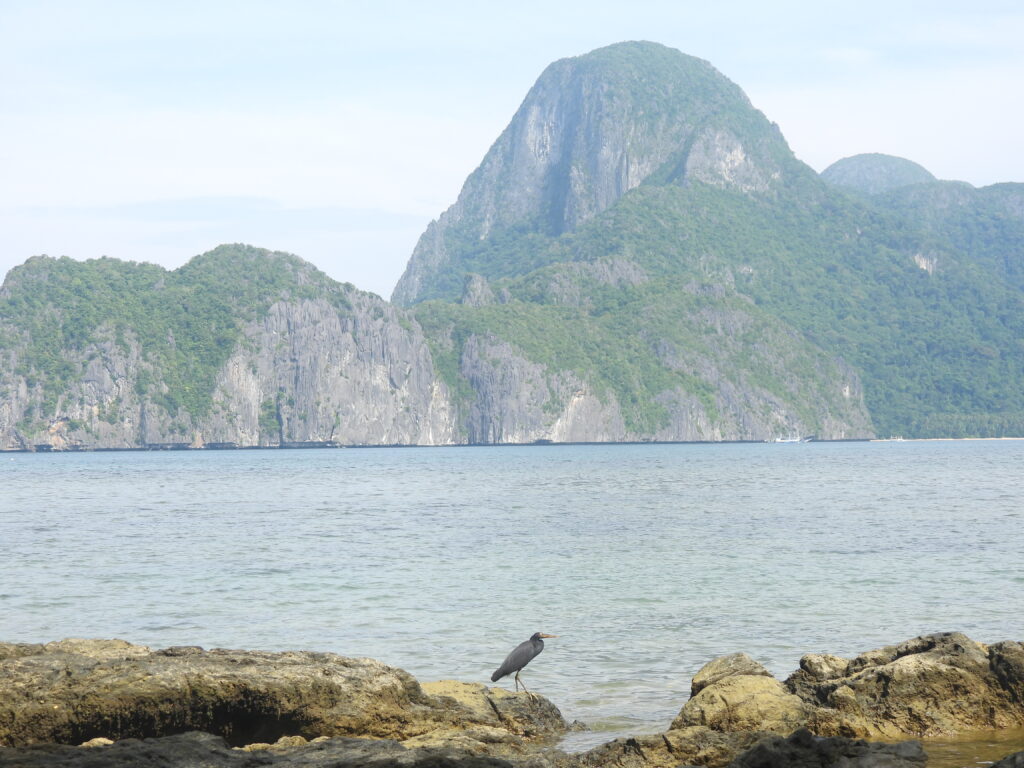
This happened in Palawan, the westernmost island of the Philippines — greatly isolated from the main archipelago in terms of biodiversity and with a good deal of bird endemics. We reached the island on 26th July, hoping for some calm beach days and productive snorkelling in scenic El Nido. Terrible stopover policies of Cebu Pacific airline resulted in our luggage being lost in Manila Airport, causing great inconvenience and stress.

Somewhat outraged and tired in paradise, we transfered back to Puerto Princesa area days later to fix it, after connecting with only few birds, highlighting our only Palawan hornbills (Anthracoceros marchei) of the trip flying over Cadlao Island forest as we kayaked the shore, and a plethora of corals, fish, and even sea turtles in the reefs underwater. Among other avian endemics in El Nido area, we only connected with Palawan sunbirds (Cinnyris aurora) and pale spiderhunters (Arachnothera dilutior).
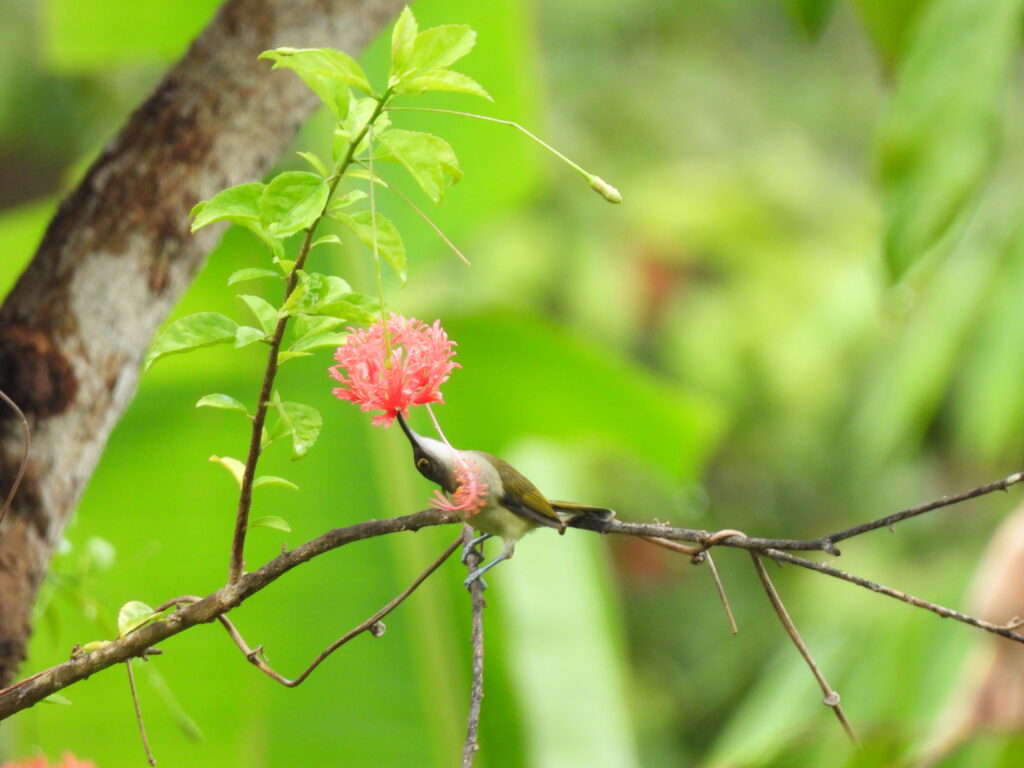
Although my international driving license was in Manila, driving in Palawan sufficed with the passport and national driving license. Accordingly, Darío Gijón and I rented a car to explore some of the bird hotspots around Puerto Princesa on 31st July. By the end of that day, and after connecting with personal big targets like Philippine cockatoo (Cacatua haematuropygia), Palawan fairy-bluebird (Irena tweeddalii), black-chinned fruit-dove (Ptilinopus leclancheri) and red-headed flameback (Chrysocolaptes erythrocephalus) driving to Cockatoo viewpoint up north and Zigzag road south Puerto Princesa, I finished the day with 991 species.

We started off early on 1st August in Zigzag road, an old paved road bypassing through forest which can be productive in the morning. As we visited the road the day before, many of the birds we found after parking the car un a roadside were familiar, some even sitting on the very same branches: Palawan drongos (Dicrurus palawanensis), Palawan crows (Corvus pusillus), blue-naped parrots (Tanygnathus lucionensis), fiery minivets (Pericrocotus igneus), white-vented shamas (Copsychus niger), yellow-throated leafbirds (Chloropsis palawanensis), lovely sunbird (Aethopyga shelleyi) and bar-bellied cuckooshrikes (Coracina striata).
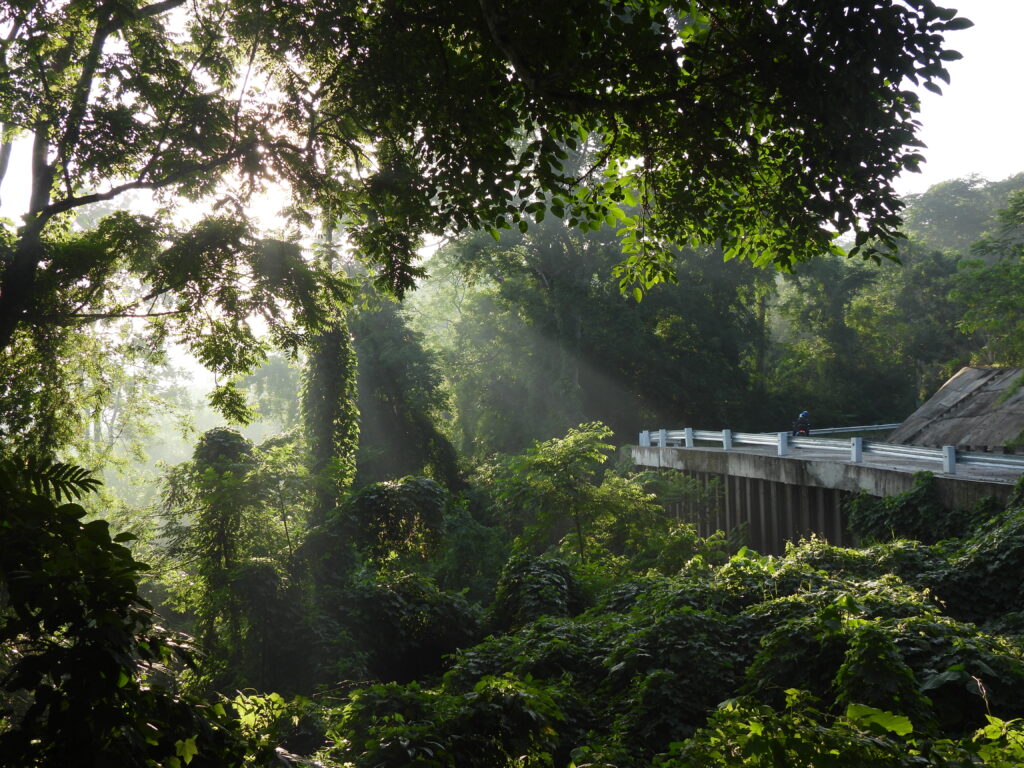
We first started walking towards the north end of the road, where the trees cover the pavement. Despite being silent, Darío glimpsed a western hooded pitta (Pitta sordida) hopping through the vegetation, at times quite visible. A stunning bird that we only heard in Borneo, and we’re glad to see now, even if briefly.
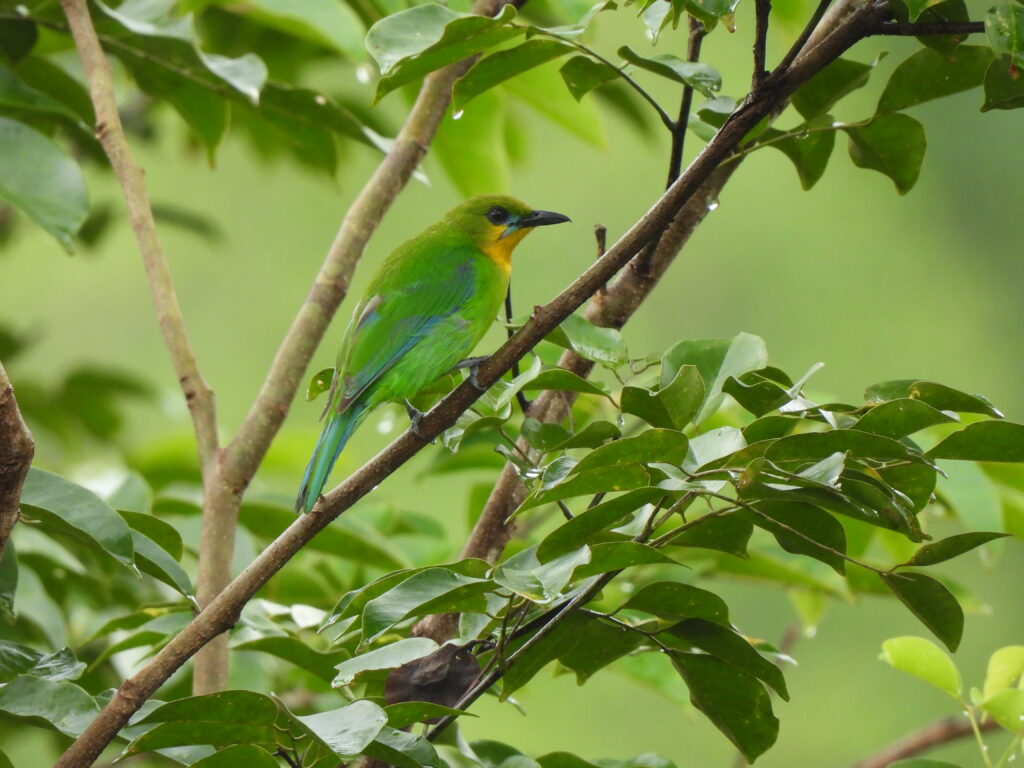
We then walk towards the other end of the road, some 500 m inside the zigzag south from the north end. Endemic gray-throated bulbuls (Alophoixus frater) and ashy-fronted bulbuls (Pycnonotus cinereifrons) became evident in the trees, as so did several pygmy flowerpeckers (Dicaeum pygmaeum) and purple-throated sunbirds (Leptocoma sperata). The Palawan form of cuckoo-dove (Macropygia sp.), still undescribed, was also present, and provided some of the best looks we had of cuckoo-doves during our trip — as the taxonomical relationship of this taxon is unsolved at the time of my visit, I do not count it as a species as of now.
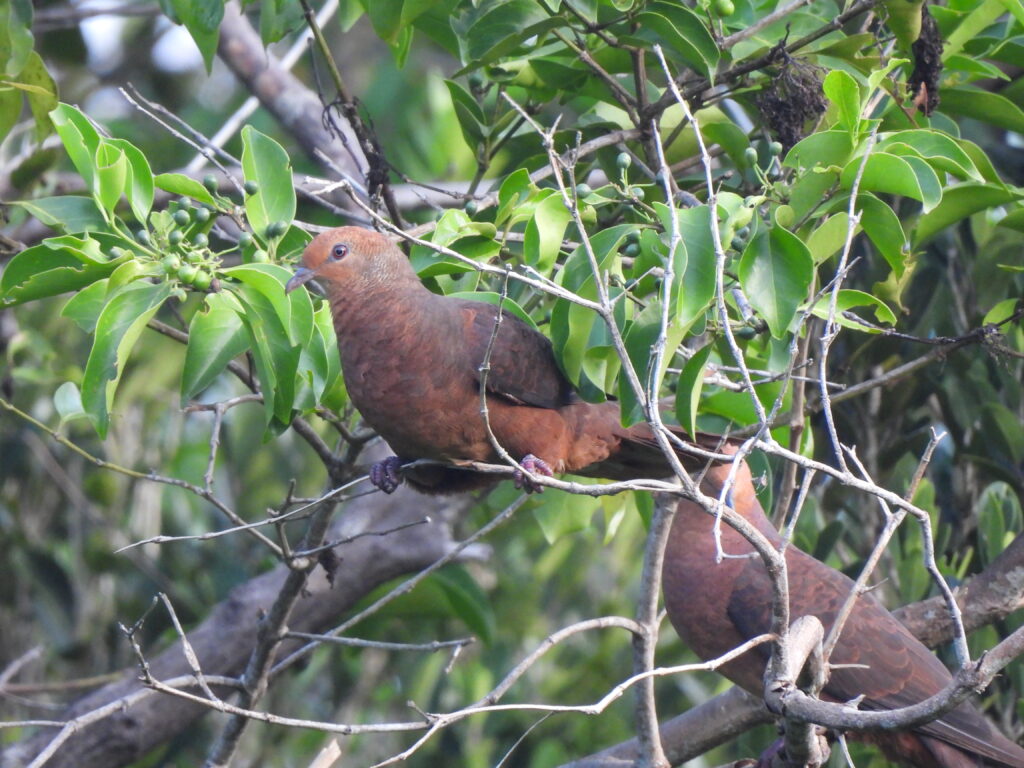
A new, repetitive call becomes evident as we walk. Several Philippine pittas (Erythropitta erythrogaster) sing from the understory in different directions, some in degraded vegetation. However, none from a position where we can glimpse them. A pity, given the stunning red-and-blue plumage of this Philippine endemic.
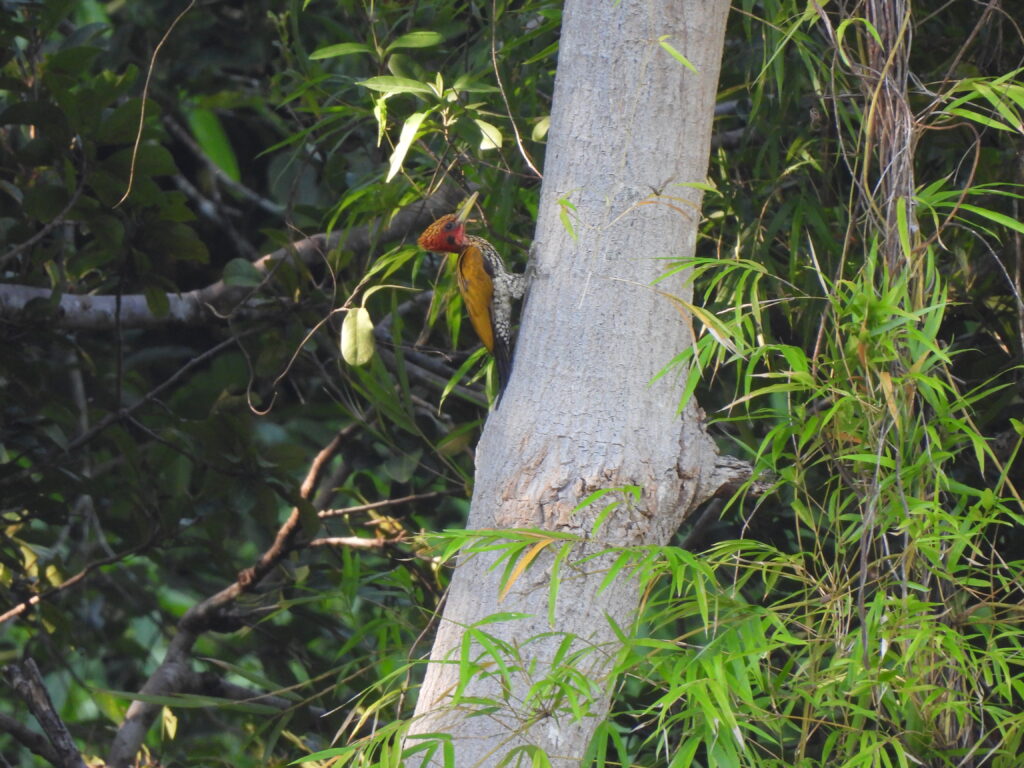
Instead, a very vocal Palawan babbler (Malacopteron palawanense) sings exposed in some vines in front of us on our way back to the car. Just as for the Philippine pitta, today we first noticed its distinctive melody (this bird is otherwise known as melodious warbler). This plain-plumaged babbler is a highly localized endemic of bamboo thickets in some lowland areas of central and northern Palawan.
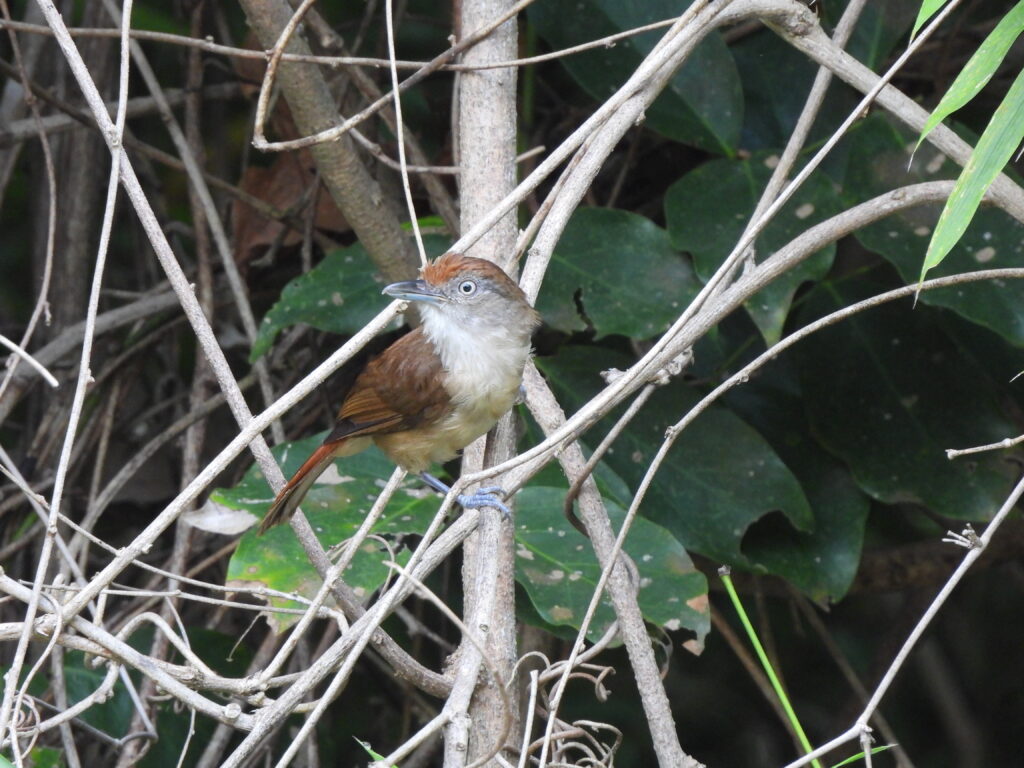
We leave Zigzag road at around 08.00 with two more lifers in the bag. Closeby, the Iwahig Prison and Penal Farm provides an interesting tourist attraction: prisoners live in fenced colonies surrounded by fields and forest, where they perform agricultural tasks. We had extensively read that a permit is required to watch birds in the pristine forest of Iwahig, and we made sure to stop by the prior day and ask at the entrance whether we could arrange it in advance for such visit. The staff at the gate said we could visit anytime from 08.00 on, so there we were.
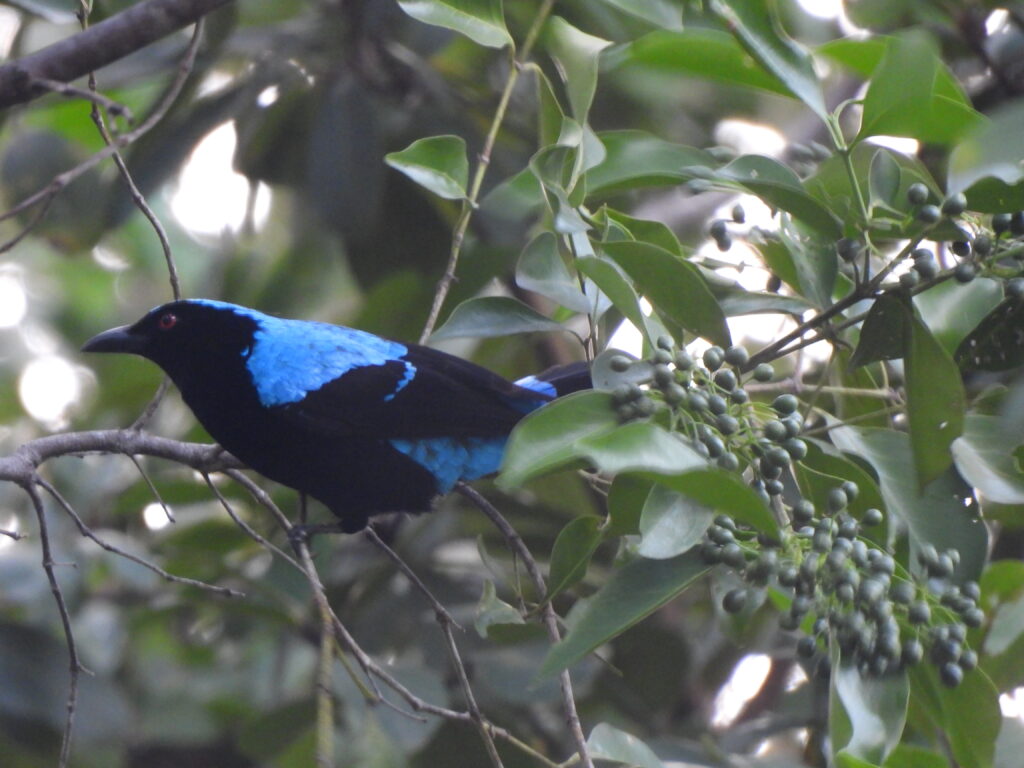
Too good to be true. We drove in towards the main office in the headquarters, where we learned that we had to ask for the birdwatching permit either inside the main office or best at an office in Puerto Princesa, but in all cases at least three days in advance (which we didn’t have at such point), definitely not at the main gate. Apparently some foreign birders recently caused an incident and this permit is the preventive measure. Yikes. Back to the gate it is. The connecting road is surrounded by rice paddies where the inmates work. Among numerous medium egrets (Ardea intermedia), great egrets (Ardea alba) and eastern cattle egrets (Ardea coromanda), a rather early whiskered tern (Chlidonias hybrida) patrolling the rice paddies. A uniform brown bird in flight hiding in the vegetation turned out to be a new lifer, a cinnamon bittern (Ixobrychus cinnamomeus). The road through the rice paddies was the best Iwahig offered for us.
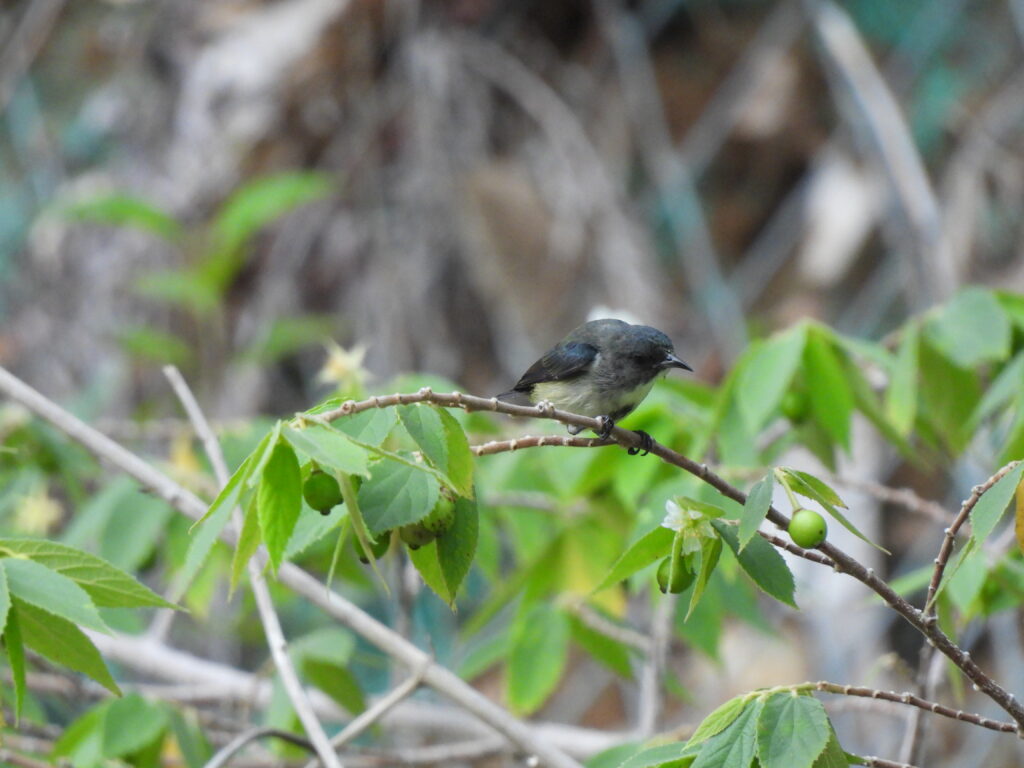
Midday is rather birdless in Palawan, and the pool of our closeby accommodation, Al Jamra Jungle Resort, is a great place to spend time in. The owner (who we never met) is a fellow birdwatcher and has named some of the houses after the birds usually found around them. On my way to the pool after the morning birdwatching, a lesser coucal (Centropus bengalensis) sang from somewhere in the garden. Even more accidentally, and adding up to the lost luggage, our car got a flat tire as we drove to the nearby village Luzviminda for lunch, and we spent a good hour getting it fixed. As we drove to the vulcanizing store in urban Puerto Princesa, a pair of pied trillers (Lalage nigra) sat on top of a tree next to a gas station. Once fixed, we enjoyed some delicious pandesal and forgot about it. Two new lifers, four species to go.
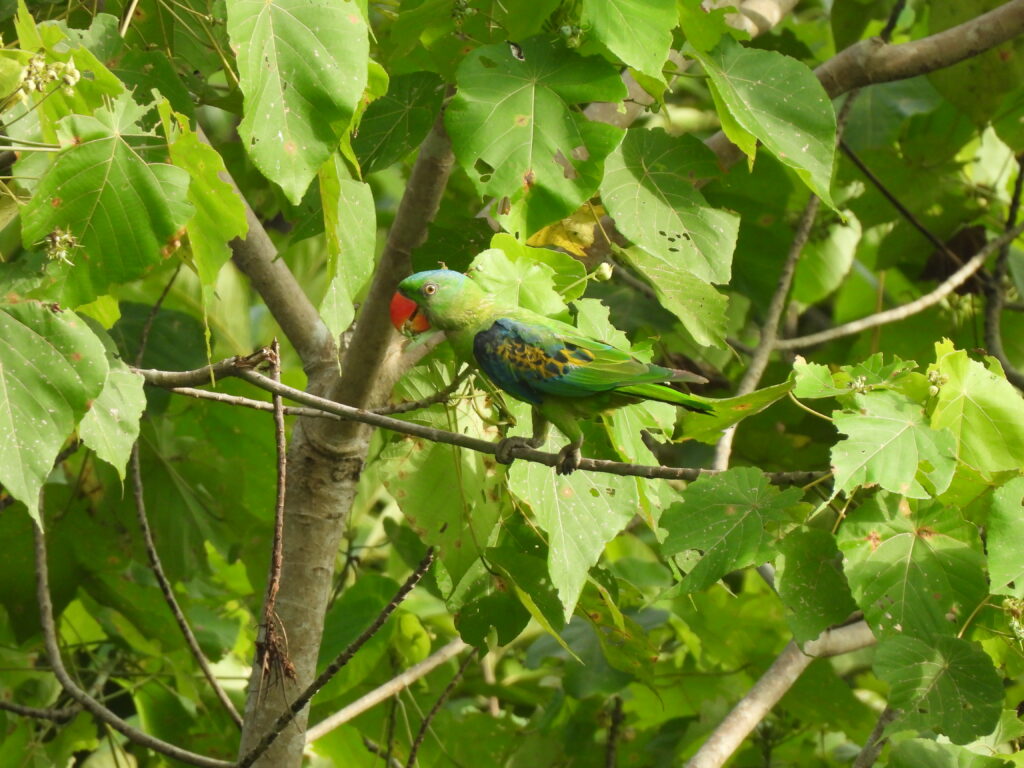
Trying to compensate the disappointment from Iwahig Penal Farm, we drove to another well preserved forest area, Irawan Eco Park. Indications on Google are confusing and we keep expectations at minimum. Indeed, on arrival after 16.30, we find a closed gate. We open it and walk through, and find some rangers. They explain that a permit is also required to visit the area — of course. We come up with a last resource. We visited Puerto Princesa Subterranean River some days before, and got a permit to visit other tourist attractions in Puerto Princesa area valid for a week. Somehow, after discussing with a ranger for a while, he was convinced and let us in, but kept the permit — meaning we would not be able to use this resource anymore.
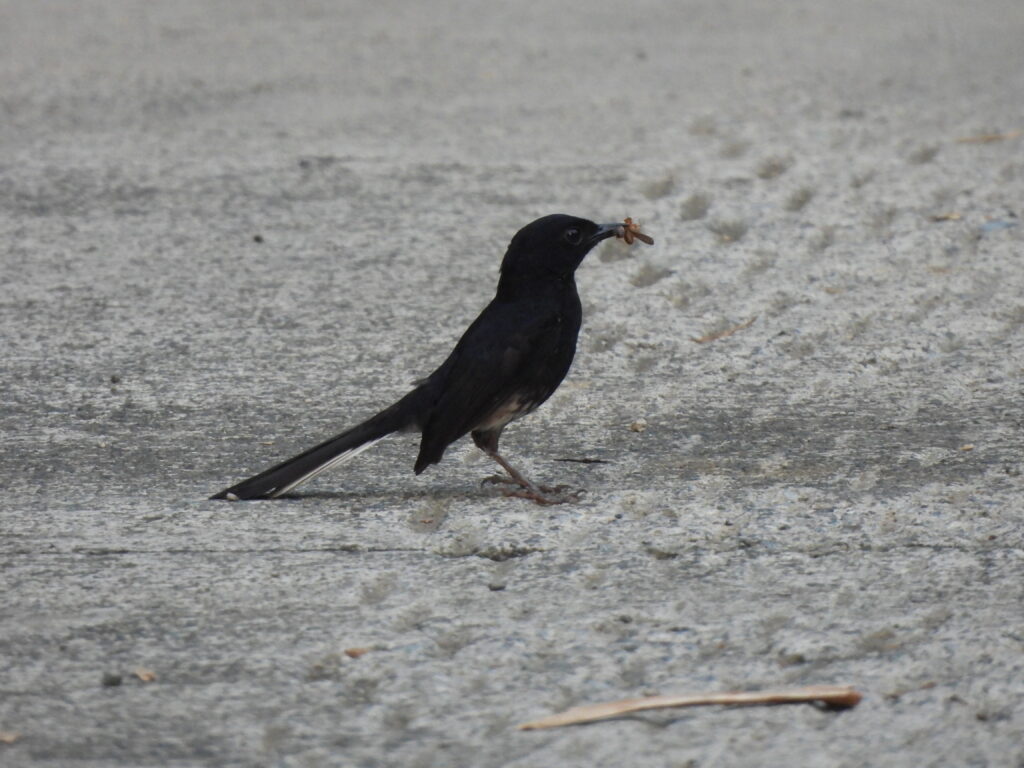
Mosquitos are rampant in Palawan during rainy season, and it was at time extremely annoying. However, connecting with the first mixed-species flock provided our first views of a long-awaited lifer, the blue paradise-flycatcher (Terpsiphone cyanescens). I am very fond of monarchs and paradise-flycatchers, and the morphology of this Palawan endemic species amazes me.
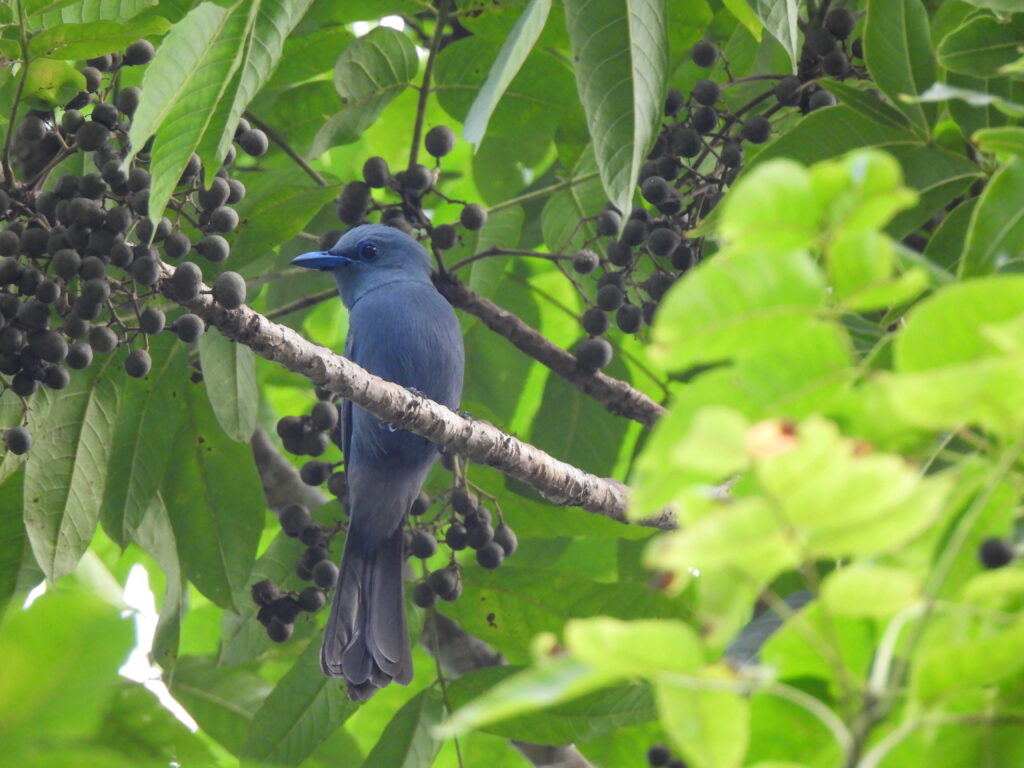
We walked the network of paths without keeping much track of our route, expecting we would find birds just by chance. Indeed, we were surprised to see (although again not hear) several western hooded pittas in the darkening forest ground. Palawan seems a great place to connect with this stunning skulker. Right before it got too dark, we managed to bag a new lifer, the spot-throated flameback (Dinopium everetti).
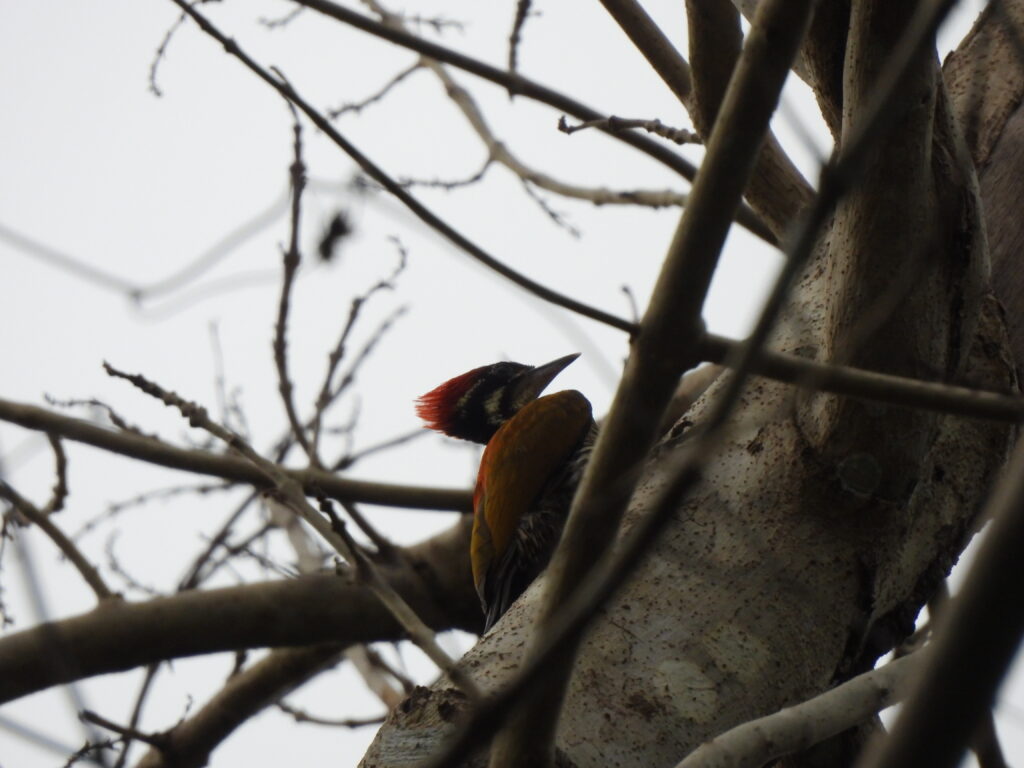
Things were getting very interesting as we headed back at night. I had only two species left for the 1000, and Irawan Eco Park is a classic spot for indeed two nocturnal Palawan endemics, both stunning birds I would very much like to see: the Palawan scops-owl (Otus fuliginosus) and the Palawan frogmouth (Batrachostomus chaseni). Seeing any of those become my 1000th species sounded awesome. And luckily, the ranger that assisted us was familiar with these species and their foraging grounds near the headquarter.

On our way back to the headquarters, already pitch black and full of mosquito bites, we managed to connect with a nocturnal bird, different from the above but also a lifer. Two spotted wood-owls (Strix seloputo) called in duet from close trees for a good amount time until they vanished before we could spotlight them.
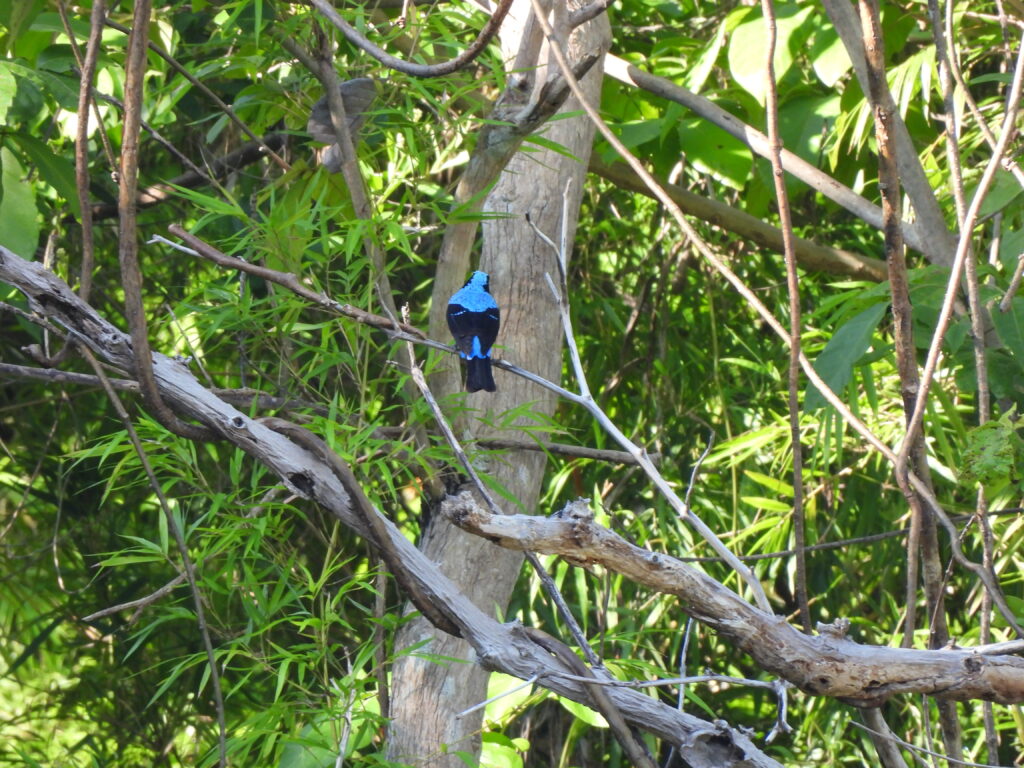
The ranger joined us for a while as we walked around the areas he pointed us for both the frogmouth and the scops-owl. The later has a haunting, rasping bark-like call, very characteristic. I got goosebumps when I heard something fitting such call from quite low in the direction of our path just left from the headquarters (usual area for the species). Surrounded by the only lights of flying fireflies, we got close. The ranger then explained this was no owl but a frog which calls almost just like the Palawan scops-owl. And while we tried to follow some other paths in very bad conditions passing through owl territories, we only managed to hear some more spotted wood-owls. Nothing else. We left the area without these epic birds and called it a day. No 1000th species, but I finished 1st August with 999 species instead. Pretty exciting.

We started the morning of 2nd Aug in Zigzag road again — the spot had proven birdy in the mornings — on our very last morning in Palawan, as we would depart to Manila past midday. However, there were several possible lifers, as our focus on relaxing in the beach and the airline-related issues have toned down our birdwatching for days and we had dipped several Palawan endemics: flycatchers, babblers, the peacock-pheasant, a tit, a bulbul… What would come next?
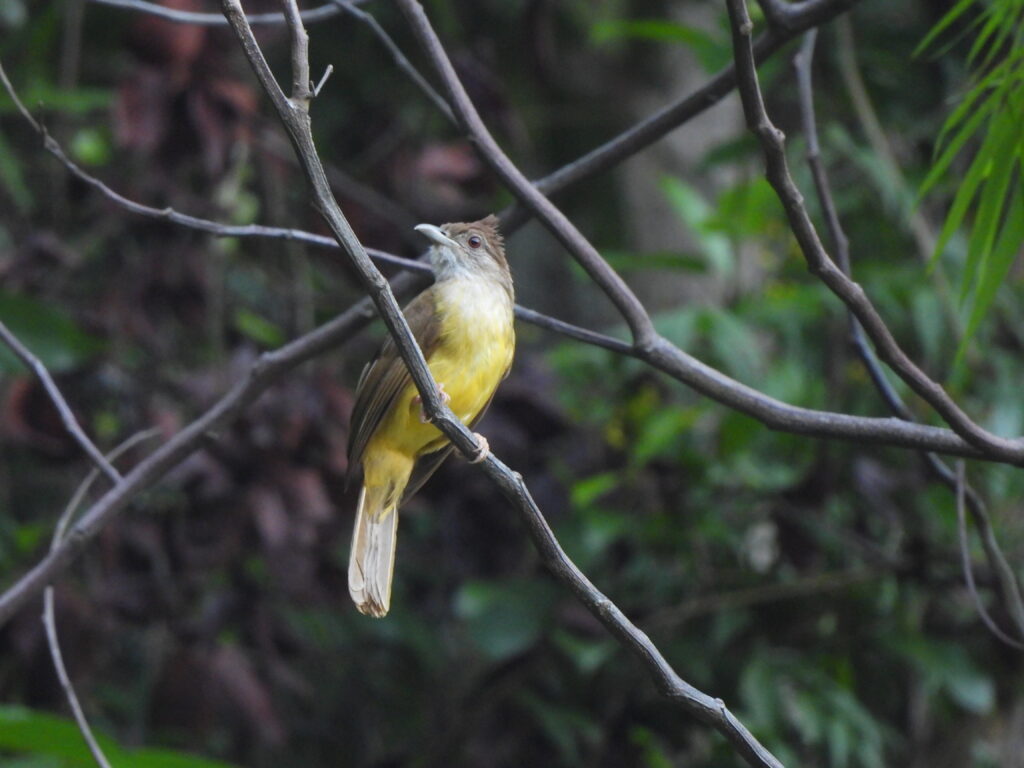
Among the first birds we see today as we walk on a section of the road further south, two bulbuls. A better look gave away their identity: sulphur-bellied bulbuls (Iole palawanensis). A yellow-brownish medium-sized bird, rather undescriptive and uninteresting other than the fact that it is endemic from Palawan. And other than the fact that it is now my 1000th species!

The birdwatching session continued: views of several of what then were familiar species, thoughts in my mind about what species had I thought would be my 1000th in the past, and nice memories of many moments that pushed me to reach this milestone in great places and with great people. No more Palawan endemics, but Darío spotted the massive, powerful silhouette of our first white-bellied woodpecker (Dryocopus javensis) and I managed to get a glimpse of it before it creeped through the vegetation. Palawan gave us a hard time for different reasons but it holds great biodiversity and impressive landscapes. And it also gave us good birding memories.

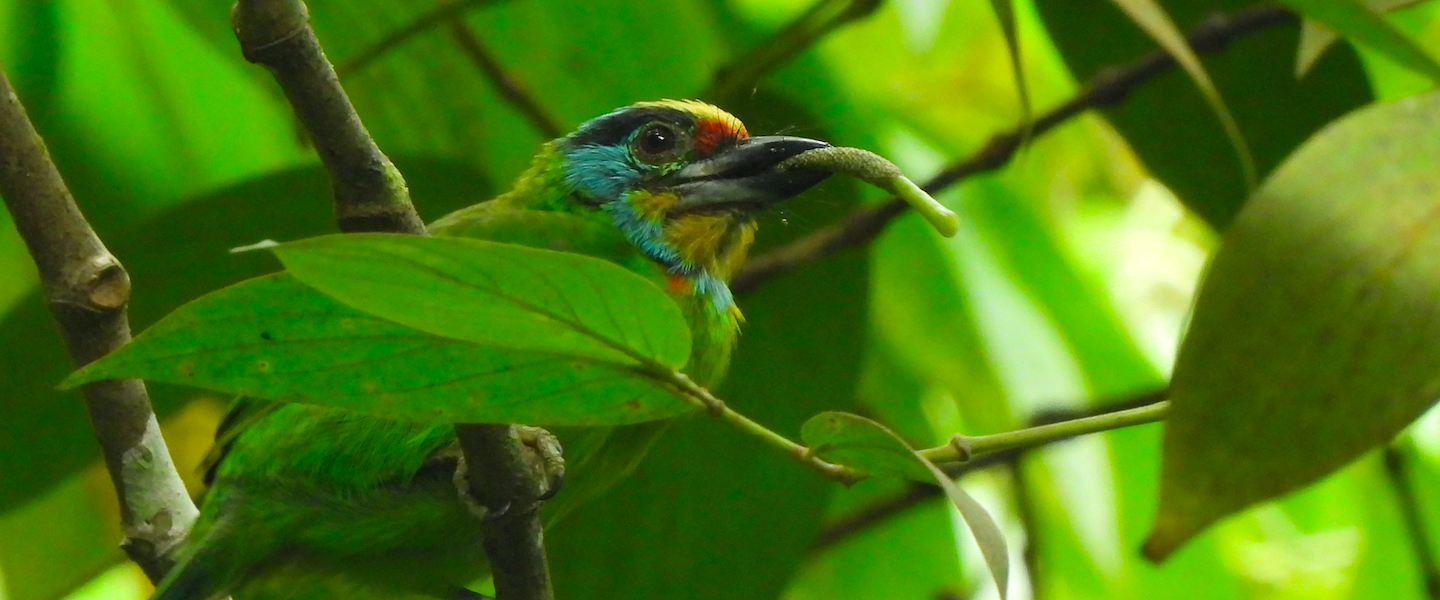



Comments are closed